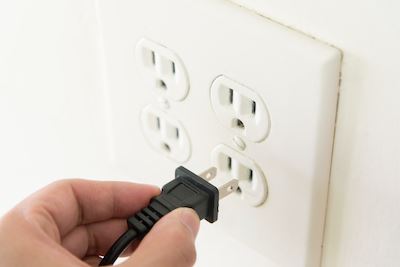Have you ever looked at your electrical outlets and wondered why they’re placed where they are? Is there a rhyme or reason to placement?
If you have an older home, you may be questioning the logic.
Electrical code is created to keep you and your family safe, and to give you enough flexibility in being able to use electricity throughout your home. Electrical code changes and is updated all the time. What may have been up to code in the 1980s or 1990s is no longer the case. We have different needs with today’s technology. We also have learned more about safety. And both of those impact the way your home is wired. 
In theory, electrical outlets are spaced according to use. You should have enough outlets along your walls to never have an electrical cord extend more than 6 feet in length. Whether you’re plugging in a light, or setting up your entertainment center, you should have access to electricity within 6 feet in either direction.
Code in general areas states that all electrical outlets be placed 12 feet apart. That includes living rooms, hallways, bedrooms, and family space. If a hallway is more than 10 feet in length, it should have at least one electrical outlet.
Having them more frequently is a personal choice. If you have specific areas throughout your home that demand more use than others, including more outlets can give you more flexibility.
Bathrooms and kitchens have their own set of rules.
In a bathroom, there must be an electrical outlet at least three feet from the outside edge of the sink basin. In most cases, you’ll find it above the countertop. But the code doesn’t specify where; as long as it’s within three feet, you’re up to code.
In a kitchen, outlets must be within 48 inches of one another. Because smaller appliances often have shorter cords, this requirement is designed as a protection device. This provides a homeowner with more flexibility as they are moving around a busy kitchen space.
Kitchens have even more requirements when installing electrical outlets:
- Outlets should never be placed more than 20 inches above the countertop
- Exceptions can be made for peninsulas and islands
- No face up receptacles
- Any wall 12 inches or larger is required to have an outlet
- At least one receptacle for a peninsula or island
- Only GFCI receptacles over countertops
All certified electricians follow the National Electrical Code, published by the US National Fire Protection Association. If you have questions about the electrical outlets in your home, or want to upgrade or add to your existing home plan, we can help.

